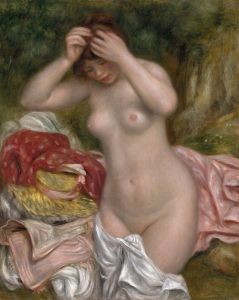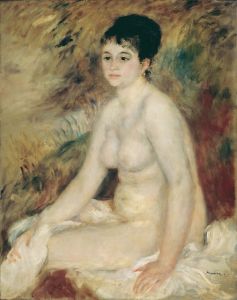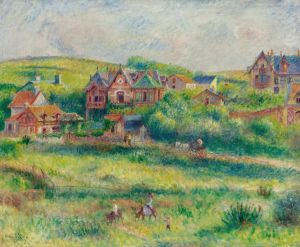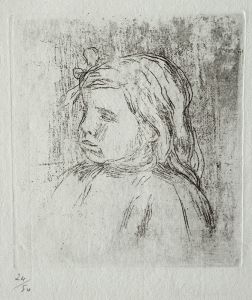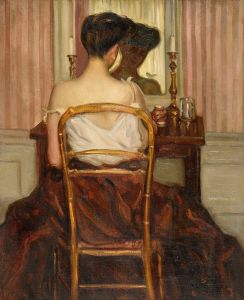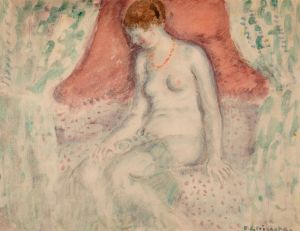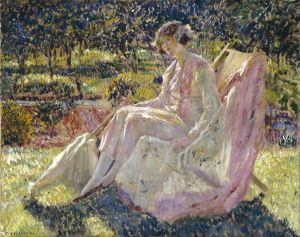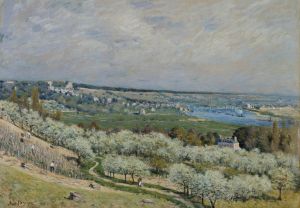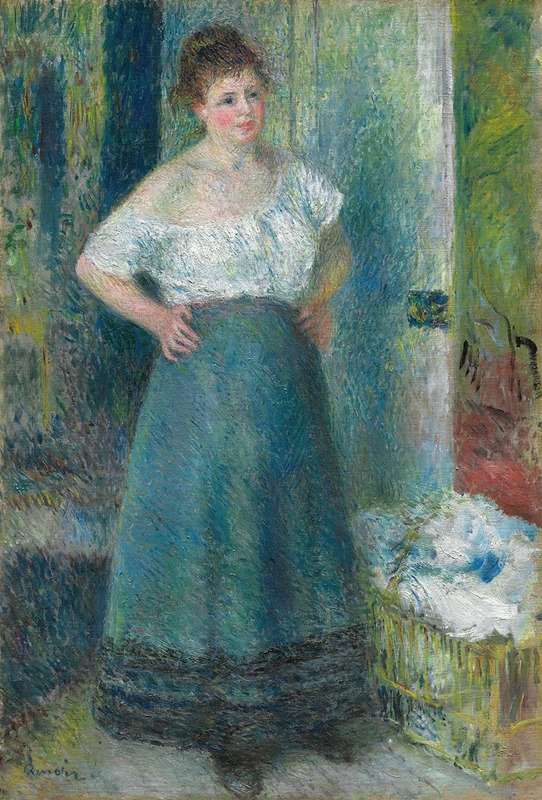
The Laundress
A hand-painted replica of Pierre-Auguste Renoir’s masterpiece The Laundress, meticulously crafted by professional artists to capture the true essence of the original. Each piece is created with museum-quality canvas and rare mineral pigments, carefully painted by experienced artists with delicate brushstrokes and rich, layered colors to perfectly recreate the texture of the original artwork. Unlike machine-printed reproductions, this hand-painted version brings the painting to life, infused with the artist’s emotions and skill in every stroke. Whether for personal collection or home decoration, it instantly elevates the artistic atmosphere of any space.
Pierre-Auguste Renoir, a leading figure in the Impressionist movement, is renowned for his vibrant light and saturated color, often focusing on people in intimate and candid compositions. One of his notable works is "The Laundress" (La Blanchisseuse), which captures a moment in the life of a working-class woman. This painting is a testament to Renoir's ability to infuse everyday scenes with a sense of beauty and vitality.
"The Laundress" was painted in 1875, a period when Renoir was deeply involved with the Impressionist group, which sought to break away from the traditional approaches of the French Academy. This painting exemplifies the Impressionist interest in contemporary life and the effects of light and atmosphere. Renoir's choice of subject—a laundress—reflects a broader trend among Impressionists to depict modern life and ordinary people, moving away from historical or mythological subjects.
In "The Laundress," Renoir employs loose brushwork and a light palette, which are characteristic of his style during this period. The painting depicts a young woman engaged in the act of laundering, a common and labor-intensive task during the 19th century. Renoir captures her in a moment of concentration, her hands busy with the fabric, conveying both the physicality of her work and a sense of quiet dignity. The background is rendered in soft, blurred strokes, drawing attention to the figure and suggesting the bustling environment of a laundry room without detailing it explicitly.
Renoir's treatment of light in "The Laundress" is particularly noteworthy. He uses light to model the figure and to create a sense of immediacy and presence. The light falls gently on the woman's face and arms, highlighting her features and the textures of her clothing. This interplay of light and shadow not only adds depth to the composition but also enhances the realism of the scene.
The painting is also significant for its social commentary. By choosing to depict a laundress, Renoir acknowledges the labor and lives of working-class women, who were often overlooked in art. This focus aligns with the Impressionist ethos of portraying real life and the diverse social fabric of Paris during the late 19th century.
"The Laundress" is housed in the National Gallery of Art in Washington, D.C., where it continues to be appreciated for its artistic merit and historical significance. The painting remains a fine example of Renoir's skill in capturing the nuances of human expression and the transient effects of light, hallmarks of his contribution to the Impressionist movement.
Overall, "The Laundress" is a reflection of Renoir's mastery in portraying the beauty of everyday life, his innovative use of color and light, and his commitment to depicting the world around him with empathy and insight.






